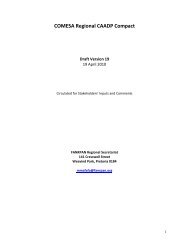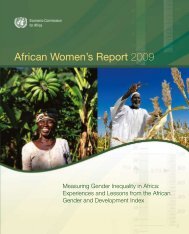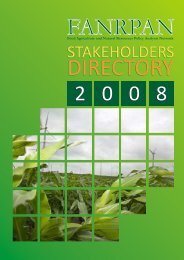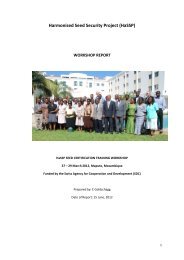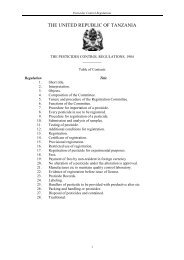Community-driven development decision tools for rural - IFAD
Community-driven development decision tools for rural - IFAD
Community-driven development decision tools for rural - IFAD
- No tags were found...
You also want an ePaper? Increase the reach of your titles
YUMPU automatically turns print PDFs into web optimized ePapers that Google loves.
Implementation arrangements<strong>for</strong> CDD projectsIXDecisions in designing implementation arrangementsProject implementation arrangements may greatly affect the CDD content of a <strong>rural</strong><strong>development</strong> project. In this regard, the most critical <strong>decision</strong>s concern• who is expected to do what;• the design of the instruments <strong>for</strong> resource transfer;• the procedures <strong>for</strong> actions that involve the CBOs.A good way to check whether the operational arrangements of a project are consistent with theCDD approach is to answer the questions shown in Box 29. These questions refer more specificallyto CDD projects concerned with developing social and production infrastructure at the communitylevel, but they can easily be adjusted to fit other components or types of CDD projects.Identifying subprojectsIdentifying subprojects of interest to the communities is a key function of community governanceorganizations. However, the communities’ options are limited by the in<strong>for</strong>mation they have aboutinvestment opportunities and by the activities that the projects are prepared to support.CDD projects may offer a wide or more limited range of investment opportunities. Theinterventions envisaged are determined based on the Participatory Rural Appraisal (PRAs)conducted during project design to assess the likely pattern of demand from different socialstrata in the communities. In repeat projects, the PRA in<strong>for</strong>mation is complemented by theexperience of predecessor projects. A good PRA is essential to design the project components,but it can only indicate people’s needs at the time it is carried out rather than their effectivedemand during project implementation.During implementation, the implementation mechanisms, if adequately designed, become theinstruments <strong>for</strong> assessing the evolution of the community’s effective demand, which may differfrom the expectations of the PRA. The project design must include an adequate process <strong>for</strong> elicitingthe community’s effective demands, specifically indicating how this will be done and under whoseresponsibility. Project supervisors must then ensure that the process is effectively followed.In order <strong>for</strong> a community to <strong>for</strong>mulate its effective demand, it must be able to assess theneeds of its members, <strong>for</strong>mulate project ideas that satisfy those needs, debate what resources thecommunity is able and willing to mobilize to undertake the projects and prioritize them into alist of concrete action plans. This means having four key ingredients <strong>for</strong> direct democracy:• a Village Development Committee (VDC);• a Village Assembly (VA), where all resident households have a voice about common<strong>development</strong> action;Box 29Designing CDD implementationarrangements <strong>for</strong> a community-level socialand economic infrastructure project• Who identifies the community subprojects?• Who prioritizes the subprojects?• Who approves the subprojects?• Who implements the subprojects?• How do community plans and districtmaster plans interact?• Who contracts with the service providers?• To whom are service providersaccountable?• How is the implementation manual<strong>for</strong>mulated?63



